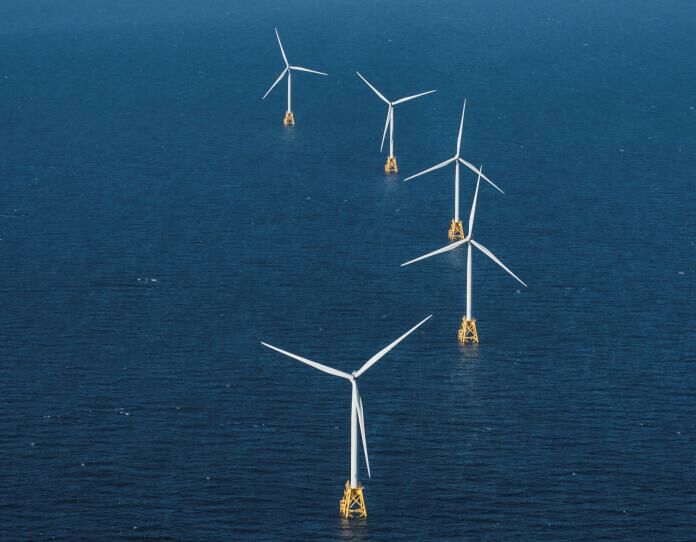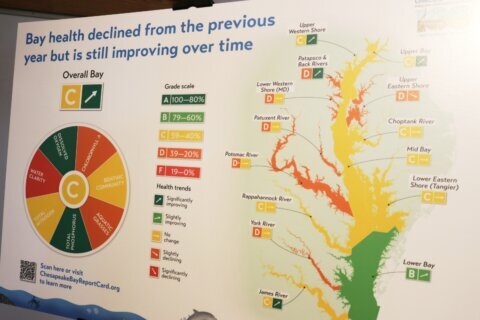This article was republished with permission from WTOP’s news partners at Maryland Matters. Sign up for Maryland Matters’ free email subscription today.

This content was republished with permission from WTOP’s news partners at Maryland Matters. Sign up for Maryland Matters’ free email subscription today.
The Danish offshore wind developer Ørsted announced Wednesday that it has submitted a bid to generate up to 760 megawatts of power with a proposed second offshore wind project off the coast of Maryland.
The project, called Skipjack Wind 2, is in response to the Maryland Public Service Commission’s call for proposals for a second round of offshore wind projects in federal waters off the Maryland coast.
The Clean Energy Jobs Act of 2019 expanded Maryland’s renewable portfolio standard to require that utilities get 50% of the electricity they sell to consumers from renewable sources by 2030. More specifically, it directed the Public Service Commission — which regulates the state’s energy utilities — to find “Round 2” offshore wind projects that could provide at least 1,200 megawatts of power by 2030.
The application period for this round closed on June 21, and the PSC’s consultant, ICF, has 30 days to review applications. The bids are confidential until then, according to Tori Leonard, spokeswoman for the PSC. It is unclear if any other companies besides Ørsted have submitted a bid for this round of offshore wind projects.
After the consultant reports to the PSC, the commission will review all applications and award offshore renewable energy credits to a project or projects for this round by Dec. 18, Leonard said.
Ørsted’s new project proposal would power over 250,000 homes in the Delmarva Peninsula, according to the company’s announcement.
“Ørsted is privileged to already be a long-term partner to the state of Maryland as it works to meet its offshore wind goals,” David Hardy, CEO of Ørsted Offshore North America, said in a statement.
“We are proud to build, own, and operate wind farms across the world and will bring that same approach to Maryland. As such, these at least 30-year commitments we are making to the state are designed to provide long-term benefits to all of the communities that will be home to our facilities. In continuing to deliver on our commitments now, and well into the future, we will ensure that Maryland’s offshore wind industry will thrive for decades to come,” he continued.
In 2013, the General Assembly passed legislation enabling offshore wind development and the Maryland PSC was designated by the federal government to award leases for offshore wind developments in federal waters. The commission finally approved two projects off the coast of Ocean City in 2017.
Ørsted is in the middle of developing one of these projects, called Skipjack Wind 1, which is to the north of Ocean City and about 19 miles off the coast. It could power 40,000 homes in the Delmarva Peninsula and is slated to start operating by 2026, company officials have said.
This project is currently under review for final approval by the federal government, as is the MarWin project by US Wind, which would generate 240 megawatts of power — enough to power almost 80,000 for a year. It is 17 miles off the coast of Maryland and tentatively slated to start operating in 2024.
These projects would run cables under the ocean, connect to the electric grid on land and provide electricity to Maryland utilities, helping the state depend less on fossil fuels and reach its goal of net-zero emissions by 2045.
Both projects have generated controversy in Ocean City, particularly among political and business leaders who believe views of wind turbines from the beach could hurt tourism and the real estate industry. But many other leaders in Delmarva believe the wind industry could be a powerful economic driver for the region.
Ørsted said it would host a virtual open house on its proposal to build a second phase of the offshore wind project on the evening of July 19.







